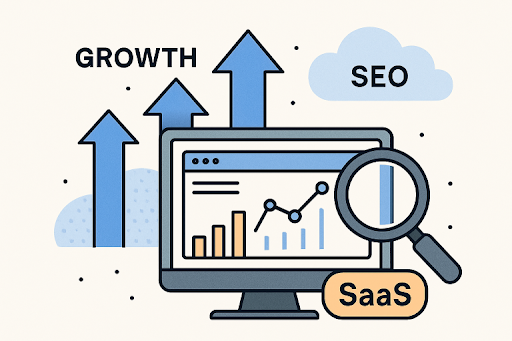The healthcare sector is steadily leaning into technology to offer better care, improve patient experiences, and reduce operational strain. Among the many innovations making waves, cloud computing has emerged as a transformative force. By moving data and applications to the cloud, healthcare providers are gaining greater flexibility and efficiency. However, as with any significant shift, it brings both rewards and responsibilities. In this article, we’ll softly explore the advantages and risks of cloud computing in healthcare, aiming to shed light on both its promise and the points of caution that come with it.
A Closer Look at the Positive Side of the Cloud
Cloud computing can be a gentle partner for healthcare organizations when implemented thoughtfully. Here are a few ways it can quietly uplift healthcare operations:
1. Smoother Access to Patient Information
With cloud-based systems, healthcare professionals can easily access medical records and patient data from almost anywhere. This flexibility supports more timely care, especially in emergencies or across different locations. Whether it’s a primary doctor in a clinic or a specialist in a remote hospital, the cloud bridges the gap and keeps everyone connected.
2. Gentle Boost in Collaboration
Cloud technology helps different departments, doctors, and even entire hospitals work together more seamlessly. When patient information is shared securely across platforms, it eliminates silos and enhances coordination. This means more informed decision-making, smoother transitions in care, and fewer delays for patients.
3. A Thoughtful Way to Reduce Costs
Investing in physical hardware and maintaining large-scale data centers can be expensive. Cloud computing softens this financial load by offering flexible, subscription-based models. Healthcare organizations only pay for what they use, allowing them to better manage resources without compromising care.
4. More Room for Innovation
Cloud platforms often include access to tools that support innovation like artificial intelligence, machine learning, and predictive analytics. These technologies can quietly enhance diagnostics, streamline administrative tasks, and offer more personalized patient care. The cloud opens doors to exploring these advancements without the need for heavy upfront investments.
Looking Gently at the Risks That Come Along
While the cloud holds great potential, it also brings along responsibilities that must be handled with care. Here are some of the thoughtful considerations healthcare providers must keep in mind:
5. Sensitivity around Data Privacy
Patient data is deeply personal, and protecting it is non-negotiable. One of the primary concerns with cloud computing in healthcare is the possibility of data breaches. If cloud environments are not properly secured, sensitive health information can become vulnerable. Ensuring compliance with privacy laws like HIPAA is essential to maintaining trust.
6. The Challenge of Downtime
Although cloud providers offer high reliability, no system is immune to occasional service disruptions. In a healthcare setting, even brief downtime can be critical. Losing access to patient data during procedures or emergencies can pose risks, so organizations must have strong backup plans and contingency systems in place.
7. Uncertainty over Data Control
Some healthcare institutions worry about where their data is stored and who ultimately has control over it. Depending on the provider, data may be stored in different regions or under various jurisdictional laws. This can lead to uncertainty and the need for clear contracts and agreements to avoid misunderstandings down the road.
8. A Gradual Learning Curve
Switching to a cloud-based system can be a significant shift for staff and healthcare providers. It often involves retraining, adjusting workflows, and learning new tools. While these changes can lead to long-term improvements, the transition itself must be managed gently and thoughtfully to avoid disruptions.
Balancing Progress with Caution
The beauty of cloud computing lies in its ability to simplify complex processes, foster innovation, and support better outcomes. Yet, as healthcare providers move forward, it’s important to weigh these advantages and risks of cloud computing with care. A well-planned strategy, along with strong partnerships with trusted cloud vendors, can help organizations find the right balance. Clear security protocols, regular staff training, and transparent communication with patients are all part of ensuring that the move to the cloud is smooth and safe.
Conclusion
Cloud computing isn’t just a trend it’s becoming an integral part of how healthcare evolves. Its capacity to enhance accessibility, improve collaboration, and reduce costs offers immense promise. At the same time, the associated risks serve as gentle reminders that technology must be handled with responsibility, especially when lives are involved. By understanding both the light and the shadows the advantages and risks of cloud computing healthcare providers can walk confidently toward a future where technology and human care work hand in hand.
FAQs about advantages and risks of cloud computing
Q1: What is cloud computing in healthcare?
Cloud computing in healthcare refers to storing, managing, and accessing health data and applications over the internet rather than on local servers or computers. It helps in sharing information securely and efficiently among healthcare professionals.
Q2: What are the main advantages of cloud computing in healthcare?
The main benefits include easy access to patient data, enhanced collaboration among medical teams, reduced IT costs, and access to advanced tools like AI and analytics. It allows healthcare providers to work more flexibly and efficiently.
Q3: Are there any risks associated with using the cloud in healthcare?
Yes, there are a few risks such as data privacy concerns, potential service outages, unclear data ownership, and the need for staff training. However, with strong planning and trusted cloud partners, these risks can be minimized.
Q4: Is cloud computing safe for sensitive patient information?
Cloud computing can be very secure if managed properly. Reputable cloud providers follow strict security measures and compliance standards like HIPAA to protect patient data. Still, healthcare organizations must take responsibility for security on their end too.
Q5: How can healthcare providers reduce the risks of cloud adoption?
They can reduce risks by choosing reliable cloud vendors, ensuring data encryption, training staff, having clear service agreements, and creating backup and disaster recovery plans.
Q6: Does moving to the cloud affect daily hospital operations?
Initially, there may be some adjustment periods as staff adapt to new tools or processes. However, over time, cloud computing can improve efficiency, reduce paperwork, and enhance the quality of care.











